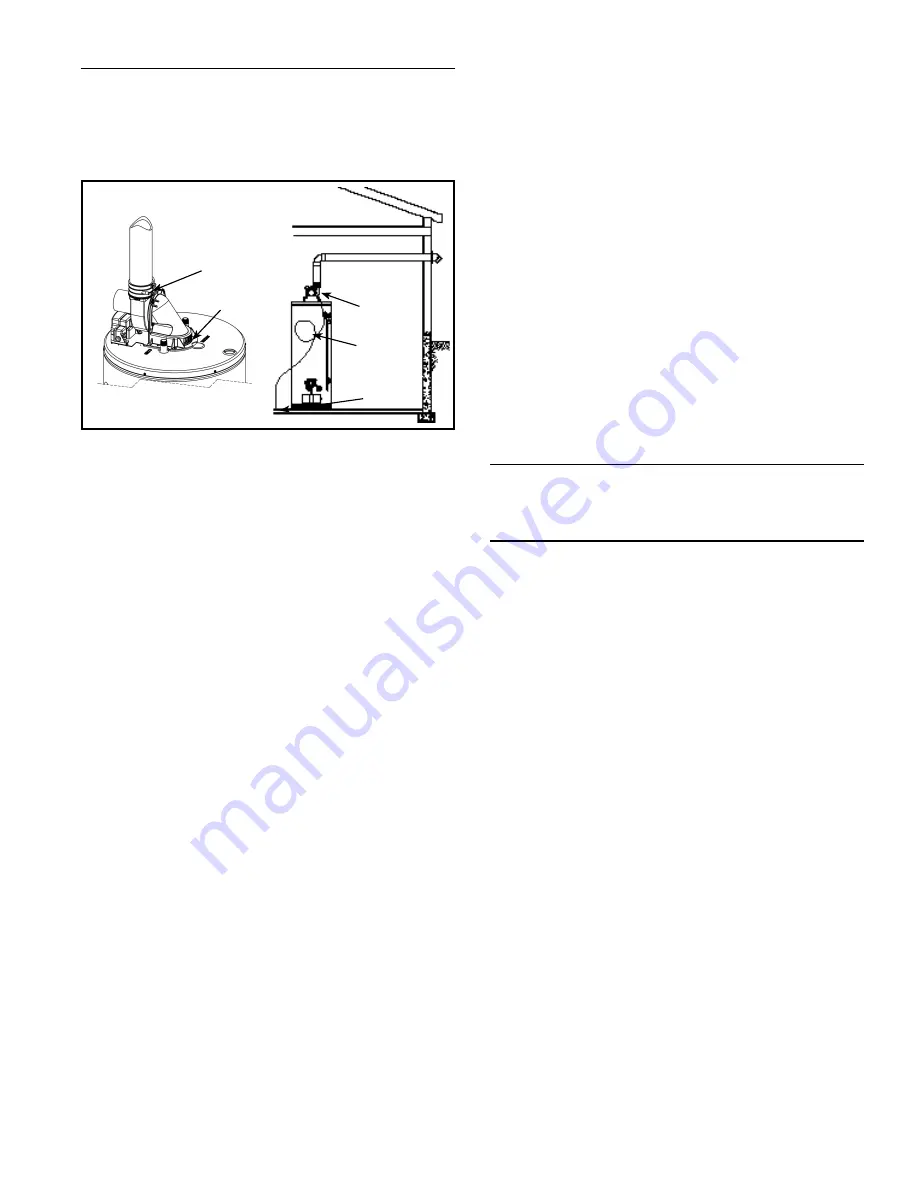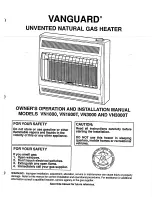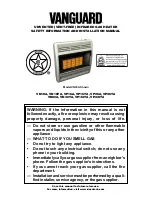
28
www. lochinvar .com
100221773_2000189439_Rev. 01
BLOWER ASSEMBLY INSTALLATION
1. This power vented water heater comes with blower
assembly installed (see Figure 30).
2. After unit is set in place, make sure blower assembly is
still mounted securely. Make sure there is no damage
to blower.
HOSE
CONNECTION
PORT FOR
CONDENSATE
DRAIN
DILUTION
AIR
INLETS
8 in.
LOOP
TO
DRAIN
BLOWER
ASSEMBLY
Figure 30.
3. Make sure there is no packing material in the inlet or
discharge of the blower.
4. Make sure that the plastic tubing is still attached
from the air pressure switch to the port on the blower
housing. Make sure the plastic tubing is not folded
anywhere between the pressure switch and the blower
housing (see Figure 37 through Figure 39).
5. This water heater is a polarity sensitive appliance and
will not operate properly if the power supply polarity
is reversed. Power to this water heater must be wired
properly (correct polarity).
6. Do not plug in power cord until vent system is
completely installed. The Power Vent operates on 110
-120 VAC. therefore a grounded outlet must be within
reach of the 6 foot flexible power cord supplied with
the heater. The power cord supplied may be used on
a unit only where local codes permit. If local codes do
not permit use of flexible power supply cord:
a. Make sure the unit is unplugged from the wall
outlet. Remove the screw and open panel on the
front of the junction box on the blower.
b. Cut the flexible power cord, leaving enough to
be able to make connections. Remove the strain
relief fitting from the box.
c. Install a suitable conduit fitting inside the
enclosure.
d. Splice field wiring into existing wiring using code
authorized method (wire nuts, etc).
e. Be certain that the neutral and line connections
are not reversed when making these connections.
f. Ground heater properly. This water heater must
be grounded in accordance with the
“National
Electrical Code”, NFPA 70
and/or local codes.
These must be followed in all cases. The water
heater must be connected to a grounded metal,
permanent wiring system or an equipment
grounding conductor must be run with the circuit
conductors and connected to the equipment
grounding terminal or lead on the water heater
(see Figure 12; the wiring diagram).
g. Close the panel on the junction box. Make sure
the access panel is properly secured.
7. The blower discharge boot is made to accept only
straight sections of 3” pipe. To start off with an elbow,
a short section of the straight pipe must be cut and
glued into the end of the elbow that will mount on the
discharge boot.
8. A rubber coupling is an integral part of the vent system
and must be used in every installation. Failure to do so
may result in overheating, poor performance, nuisance
lock-outs, personal injury or death.
INSTALLATION OF VENT SYSTEM
Before beginning installation of piping system, thoroughly
read the “Vent Pipe Preparation” section of this manual.
PLANNING THE VENT SYSTEM
Plan the layout of the vent system from the vent termination
to the water heater considering all of the 90 degree and 45
degree elbows plus the number of feet of pipe that would
be needed to install the total vent system. The water heater
must be vented to the outdoors as described in these
instructions. This water heater must be vented separately
from all other appliances.
The unit may be vented horizontally through a wall or
vertically through the roof. Pipe runs must be adequately
supported along both vertical and horizontal runs.
Note:
Do not use an elbow as a support point. Elbows are
not designed to carry the load or stresses of the venting
system if they are rigidly held.
It is imperative that the first hanger (or support) be located
on the horizontal run immediately adjacent to the first
90° elbow from the vertical rise. Support method used
should isolate the vent pipe from the floor joists or other
structural members to prevent the transmission of noise
and vibration. Do not support, pin, or otherwise secure the
venting system in a way that restricts the normal thermal
expansion and contraction of the chosen venting material.
If the water heater is being installed as a replacement for
an existing power vented heater in pre-existing venting,
a thorough inspection of existing venting system must be
performed prior to any installation work. Verify that correct
material, as detailed in below, has been used, and that the
minimum or maximum vent lengths and terminal location
as detailed in this manual have been met.
















































